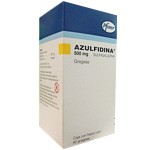Psoriatic Arthritis: Understanding, Living with, and Treating a Complex Condition


Psoriatic arthritis (PsA) is a chronic inflammatory disease that affects both the skin and the joints. It is often misunderstood or misdiagnosed due to its varied symptoms and overlap with other forms of arthritis. Affecting approximately 30% of people who have psoriasis — a skin condition characterized by red, scaly patches — psoriatic arthritis can range from mild discomfort to severe disability. Early recognition and effective treatment are critical to preventing long-term joint damage and preserving quality of life.
What Is Psoriatic Arthritis?
Psoriatic arthritis is an autoimmune disease, meaning that the body’s immune system mistakenly attacks healthy tissues, in this case, the joints and skin. Unlike osteoarthritis, which is caused by wear and tear, PsA involves systemic inflammation that can affect multiple systems in the body. This inflammation targets the synovium (the lining of the joints), causing swelling, pain, and stiffness. Over time, if left untreated, this can lead to irreversible joint damage.
The condition typically develops in people with a history of psoriasis, though it can also appear before any skin lesions are visible. PsA does not discriminate by age, though it most commonly develops between the ages of 30 and 50. It affects men and women equally and may follow a fluctuating course, with periods of flare-ups and remission.
First Signs and Symptoms of Psoriatic Arthritis
The early signs of psoriatic arthritis can be subtle and are sometimes confused with other musculoskeletal disorders. The most common initial symptom is joint pain, often accompanied by stiffness and swelling, especially in the fingers and toes. This inflammation may cause "sausage-like" swelling, medically termed dactylitis, which is quite characteristic of PsA. The stiffness tends to be more pronounced in the morning or after periods of inactivity.
Another early sign is enthesitis — pain and tenderness where tendons and ligaments attach to bones, such as at the heel (Achilles tendon) or the sole of the foot (plantar fascia). Nail changes are also frequent, with patients experiencing pitting, ridging, or separation of the nail from the nail bed, closely resembling fungal infections.
Fatigue is another common but non-specific symptom that often precedes joint involvement. In some patients, redness and pain in the eyes (uveitis) or gastrointestinal issues may also appear as part of a broader inflammatory profile.
Living with Psoriatic Arthritis
While psoriatic arthritis is a lifelong condition, many people manage to live normal and fulfilling lives with proper treatment and lifestyle modifications. The disease varies significantly in severity and progression. For some, it may involve only mild joint discomfort with infrequent flares; for others, it can be a persistent, disabling illness.
The key to maintaining quality of life lies in early diagnosis and proactive management. Regular physical activity, maintaining a healthy weight, avoiding smoking, and managing stress all contribute to better disease control. Patient education is equally crucial, as individuals who understand their condition are more likely to adhere to treatment and recognize flare triggers.
Social and emotional support also play a vital role. Chronic illnesses like PsA can take a toll on mental health, and many patients report symptoms of anxiety and depression. A multidisciplinary approach, involving rheumatologists, dermatologists, physical therapists, and mental health professionals, can help patients navigate the challenges of the disease more effectively.
Types of Psoriatic Arthritis
Psoriatic arthritis is not a single entity but a spectrum of related conditions. Clinicians typically categorize PsA into five distinct types, each with different patterns of joint involvement and severity.
The most common form is symmetric polyarthritis, which resembles rheumatoid arthritis. It affects joints on both sides of the body, typically the small joints of the hands and feet. Asymmetric oligoarthritis, by contrast, involves fewer than five joints and may affect only one side of the body.
Another variant is distal interphalangeal predominant PsA, which affects the joints closest to the nails. This type is strongly associated with nail changes and can lead to significant hand deformities over time.
Spondylitis is a type of PsA that affects the spine and sacroiliac joints, causing stiffness in the neck, back, and pelvis. This form can sometimes be confused with ankylosing spondylitis, another type of inflammatory arthritis.
Finally, arthritis mutilans is a rare but severe form of PsA. It causes rapid joint damage and deformation, primarily in the hands and feet, and can lead to severe disability if not treated aggressively.
Understanding the type of psoriatic arthritis a patient has helps tailor the treatment plan and provides insight into the likely course of the disease.
Advances in Treatment: What’s New?
Over the past two decades, the treatment landscape for psoriatic arthritis has expanded dramatically. While traditional medications such as non-steroidal anti-inflammatory drugs (NSAIDs) and conventional disease-modifying antirheumatic drugs (DMARDs) like methotrexate are still used, newer targeted therapies have transformed outcomes for many patients.
Biologic agents, which target specific components of the immune system, have been a game-changer. These include tumor necrosis factor (TNF) inhibitors, interleukin (IL)-17 and IL-23 inhibitors, and T-cell co-stimulation blockers. These drugs not only reduce joint inflammation but also help control the skin symptoms of psoriasis.
More recently, oral small molecule drugs known as Janus kinase (JAK) inhibitors and phosphodiesterase-4 (PDE4) inhibitors have been introduced. These treatments offer options for patients who prefer pills over injections or who do not respond well to biologics.
Treatment is often tailored based on the severity of the disease, the specific joints involved, patient preference, and comorbid conditions. For example, someone with extensive skin involvement might benefit from IL-17 or IL-23 inhibitors, while those with predominant spinal disease may respond better to TNF inhibitors.
Despite these advances, achieving full remission remains a challenge for many patients. That’s why early and aggressive treatment is recommended to prevent irreversible joint damage and preserve function.
The Role of Azulfidine in Treating Psoriatic Arthritis
Azulfidine, also known by its generic name sulfasalazine, is one of the older DMARDs used to treat psoriatic arthritis. Although it is not the first-line treatment today, it still holds a valuable place in managing mild to moderate disease, especially in patients who cannot tolerate newer medications.
Sulfasalazine works by reducing inflammation in the joints and is thought to modulate immune responses. It is particularly effective in patients with peripheral joint involvement rather than axial (spinal) disease. The medication is taken orally and typically requires several weeks to months before significant improvement is noticed.
Its use is sometimes combined with other DMARDs, such as methotrexate or leflunomide, to enhance effectiveness. While not as potent as biologic therapies, Azulfidine remains a cost-effective option for many patients and can be particularly useful in resource-limited settings.
Like all medications, sulfasalazine has potential side effects. These may include gastrointestinal upset, rash, headache, and, rarely, liver or blood-related complications. Regular monitoring through blood tests is recommended to ensure the drug remains safe for continued use.
Despite the development of more modern treatments, Azulfidine represents a time-tested option that still benefits many patients today, especially those with less aggressive disease or those unable to access biologics due to insurance or other barriers.
Conclusion
Psoriatic arthritis is a multifaceted disease that affects far more than the joints. It has the potential to significantly impair quality of life, but with proper diagnosis, tailored treatment, and a comprehensive care approach, most patients can manage their symptoms effectively. From early signs like joint swelling and nail changes to the complexities of the five disease types, understanding PsA is the first step toward controlling it.
New therapies offer hope for even the most stubborn cases, and older drugs like Azulfidine continue to provide benefit in appropriate cases. While PsA cannot be cured, it can be controlled — and with the right support, patients can live full and active lives.
Medically Reviewed by Dr. Faride Ramos, MD
(Updated at Jun 27 / 2025)

